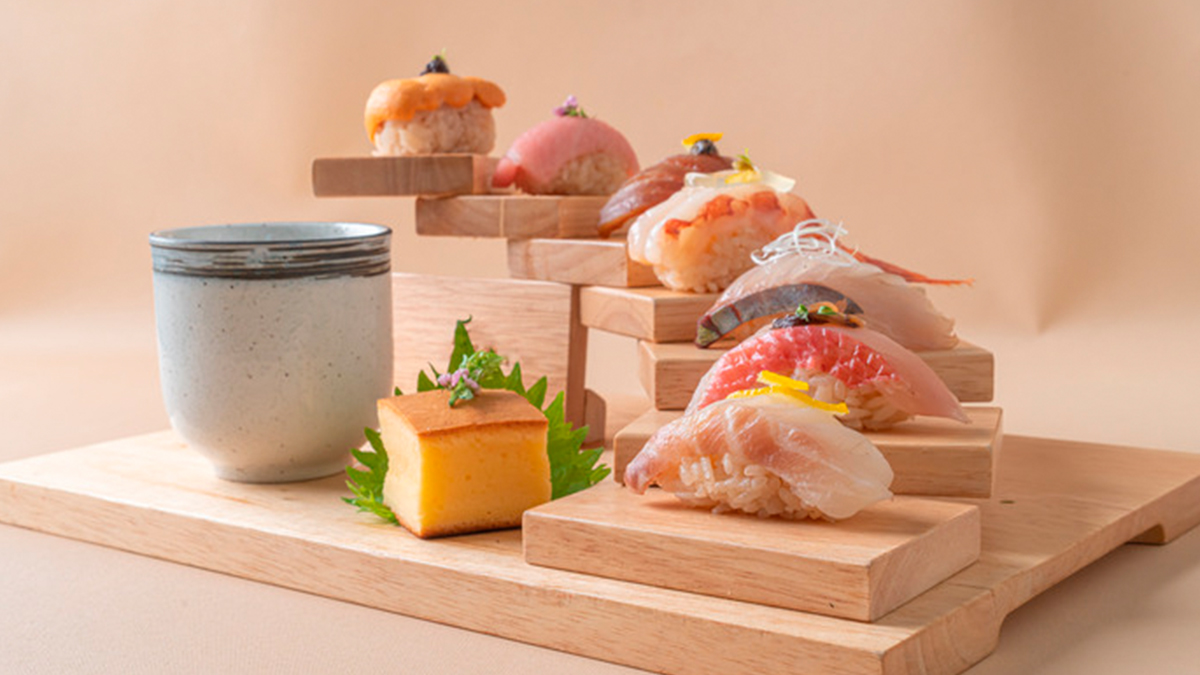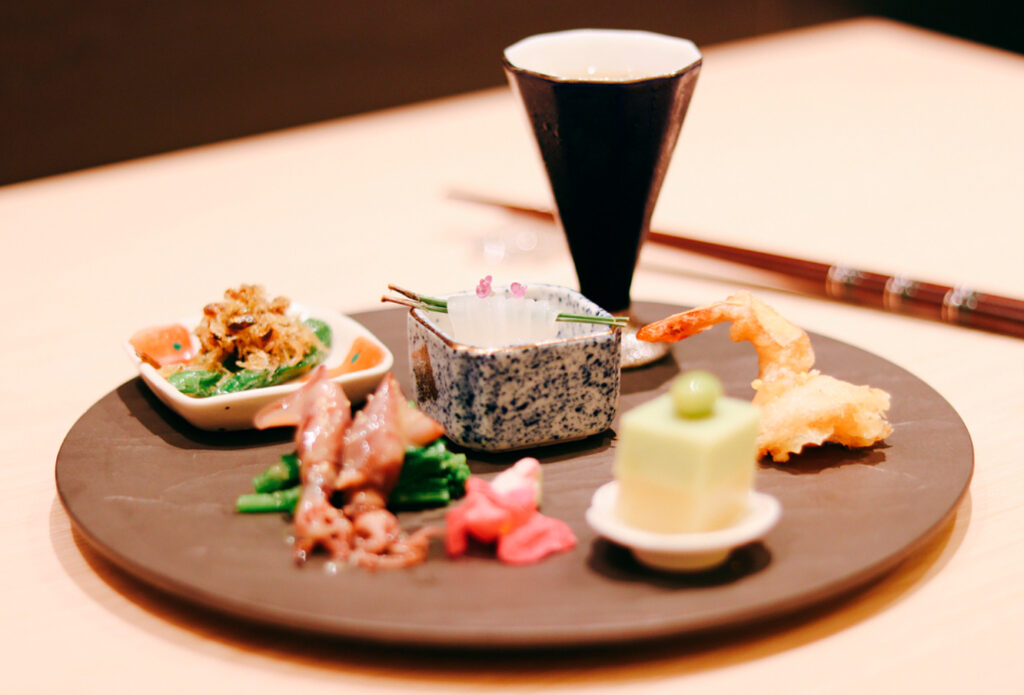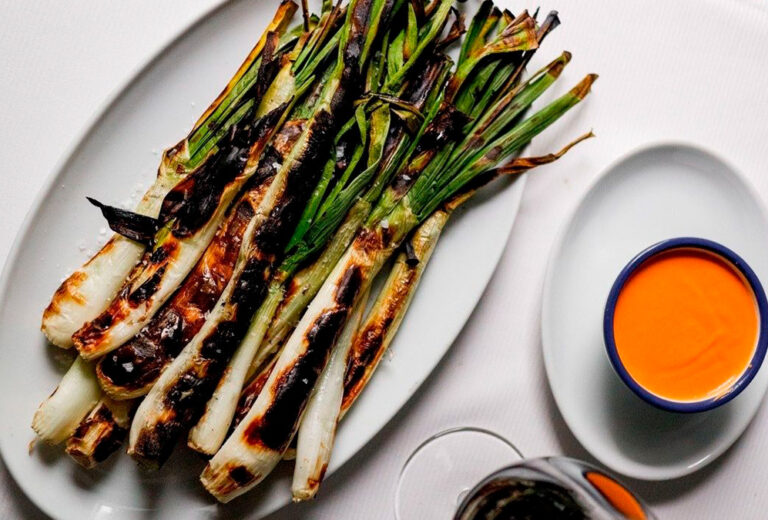Click here to read the Spanish version.
The term ‘omakase‘, despite being fashionable, may not yet be part of the collective imagination. Therefore, we delve into the depths of this elevated experience in the world of Japanese gastronomy, to decode all its distinctive elements and the narrative that surrounds it.
The story behind this concept could start with its meaning. Omakase is a Japanese expression that means ‘I leave it up to you’ or ‘I leave it in your hands’, and is said by the customer of a restaurant, usually sushi, to tell the chef to prepare what he wants. A tradition in which the diner does not choose the dishes, but must trust the chef and accept each of the dishes he cooks.
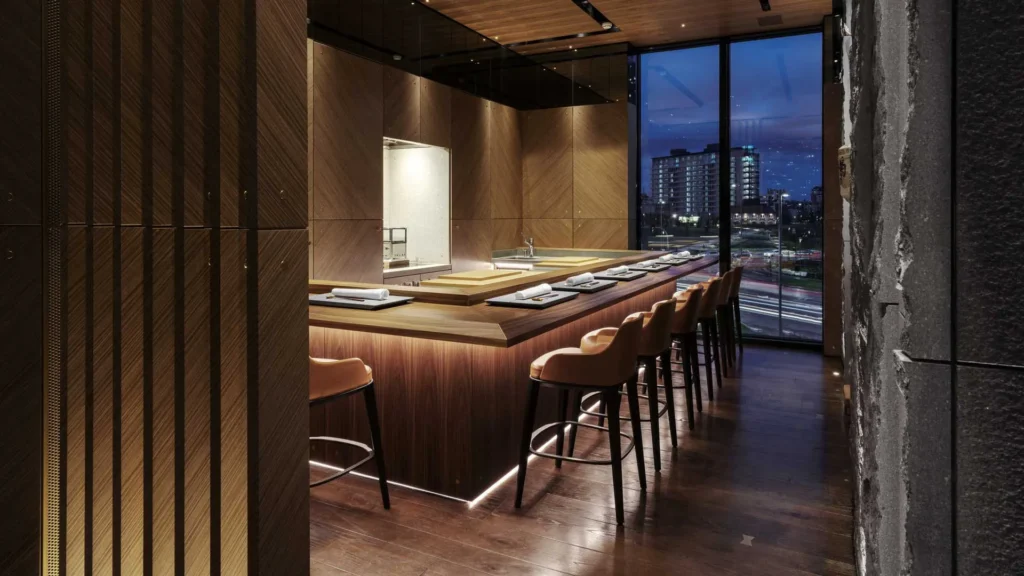
The origins
Contrary to what one might think, omakase is not a centuries-old tradition. It is said to have its origins in traditional sushi restaurants, and the term became popular in the 1990s.
In this sense, prior to the 1990s, sushi restaurants could be relatively expensive in Japan, and it was common for gourmets or wealthy customers to be involved and/or interested in ‘high sushi culture’ under a relative lack of knowledge. Even so, they would enter fine dining restaurants to taste their creations, generating -in parallel- a change in sushi culture.
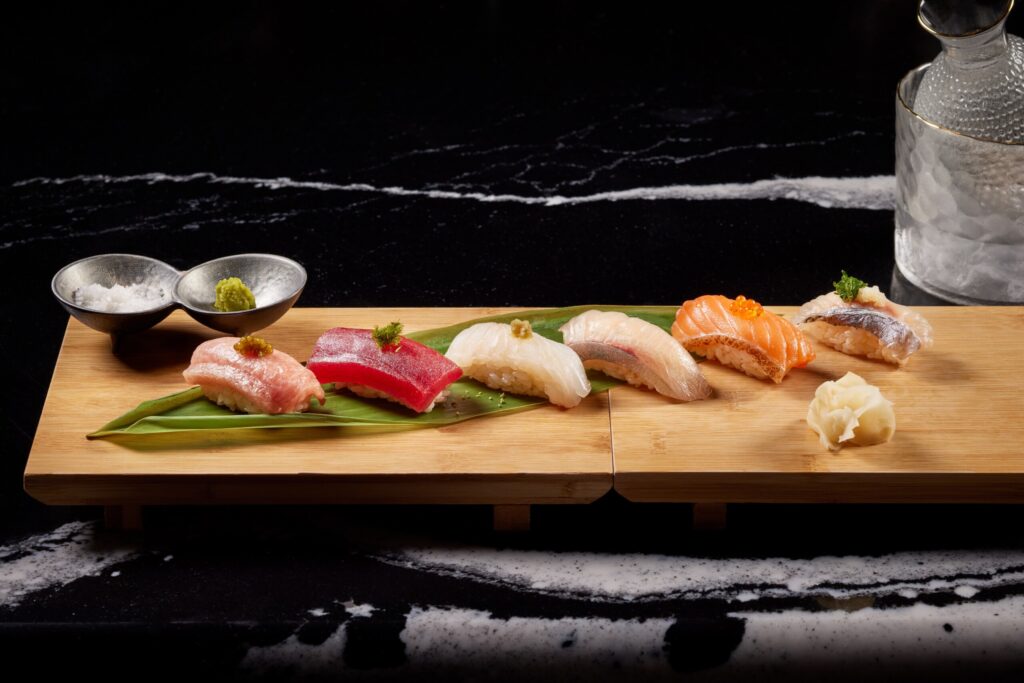
Customers were happy with familiar menu items such as some sakes or side dishes, but, like many of the newcomers, they didn’t know much about fish, and needed a way to be able to place an order and leave it in the hands of the chef; saving them the ’embarrassment’ of not knowing the name of a particular fish. To help them keep up appearances, the ‘omakase’ was born.
The ritual
The omakase ritual revolves around an experience based on the direct relationship between the chef and the diner, who sits in the front row, observing in close-up each of the movements and elaborations of this ‘sushi master’ who will direct the culinary narrative from beginning to end.
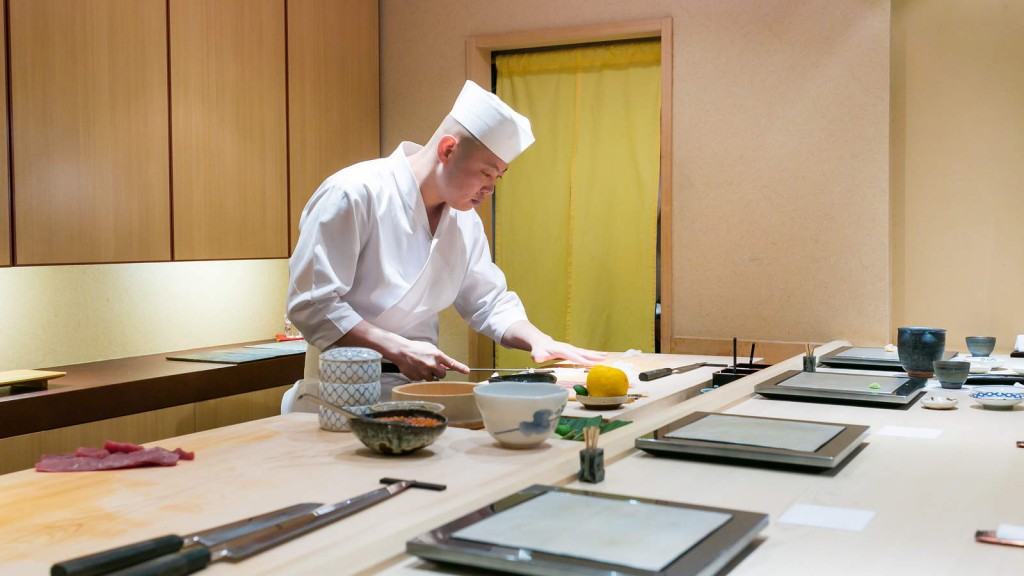
Unlike other sushi restaurants, customers can sit at the sushi bar and interact directly with the chef, who usually comments on certain anecdotes, stories or recommendations related to each of his creations, giving way to a more intimate and enveloping atmosphere.
Chef’s creativity
Its tasting menu in elevated and/or experimental versions can involve an infinite number of ‘omakase’ dishes, such as the so-called ‘zensai’, like selections of sashimi, soups or fish that coexist with the tea ceremony or toasts with fermented beverages or Japanese distillates. In the end, each omakase chef singularizes both his menu and his experience, giving way to multiple versions that reflect his interpretation of Japanese culinary techniques.
Chefs, for their omakase elaborations, usually give priority to seasonal seafood in order to raise the quality in their menus in which nigiri is usually positioned as one of the essential dishes. As a key piece of this signature experience that, according to Vogue, should cost at least $100 per person. Even so, both its demand and the expansion of its oriental influence continue to rise in the West.

